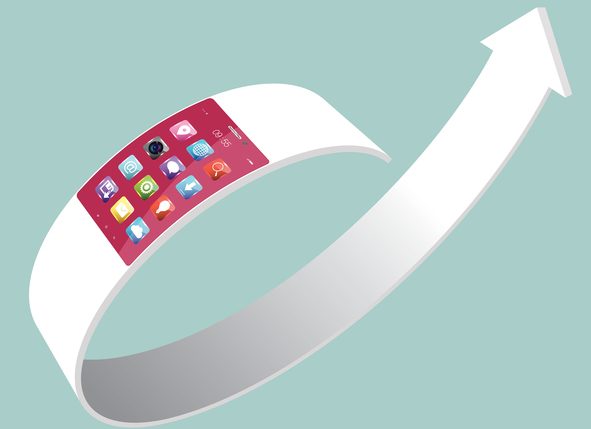The popularity of smart devices and wearables has already had and will continue to have, a significant impact on the healthcare sector.
Consumers have embraced sensor-laden devices and are adopting them for a wide variety of uses, both with or without a prescription. One major benefit of consumers turning to wearables in healthcare is the ability to personalize data for the end user and to provide real time actionable data, both inside and outside the hospital’s walls.
The lifestyle aspect of wearables cannot be underestimated. In fact, careful integration of wearable sensors and artificial intelligence will enable not only remote patient compliance monitoring but also real time feedback in scenarios where it is useful, like rehabilitation. By applying advanced analytics and machine learning, healthcare providers can engage with patients outside of health care facilities, providing useful, ongoing information in a way that fits the patient’s lifestyle and reduces readmissions.
Nonetheless, there are challenges to mainstream adoption rates, including the need for providers to learn how to fully utilize the data extracted from wearable devices. Further, many people typically resist wearing devices that are clearly medical in appearance outside of health care facilities or devices that don’t more readily become part of their daily routine.
This is why it is important that overt wearables disappear and merge more innately with lifestyle apparels and garments, which people already wear on a daily basis. Consequently, some companies are launching smart clothing and body sensors that look like normal everyday clothing. Sensors are embedded into the fabric and are not visible, making the garment the computer. It’s a concept I like to call the Internet of Me (IoMe).
Let’s look at one scenario where these types of solutions can revolutionize the current health care: detection and prevention of falls.
Falls are the number one cause of fatal and nonfatal injuries among individuals 65 and older. About one-third of people in this group fall each year, according to the Center for Disease Control and Prevention (CDC), and national data indicates an alarming rise in fall-related hospitalizations over the last decade. At a Seattle HMO — Kaiser Permanente Washington [Editor’s Note: formerly Group Health, a client of author’s firm] — data shows that hospitalizations due to falls cost approximately $30,000 and in aggregate exceed $19 billion a year (CDC). Now, many innovators endeavor to reduce the burden of falls in people affected by neurological conditions, such as Alzheimer’s, through targeted early alerts to encourage a change in behavior, such as use of a walker or a cane.
In order to solve this problem, these innovators need to take a scalable, holistic, platform approach. That’s the reason many developers are working to provide health and healthcare brands with the tools needed to easily integrate technology components into a wide range of existing wearable systems. More importantly, there is an industrial shift toward wearables, like smart garments, that fit directly into the consumer’s lifestyle, because people do not want to be “patients” outside of the hospital. This approach enables a much higher degree of compliance for that mere fact.
For example, smart socks equipped with data-collecting sensors are natural for consumers to wear on a daily basis, even outside of patient scenarios, and can help with fall detection and prevention. Socks that collect information on speed, gait, balance, and activity can provide customizable application alerts for the patient, family members, caregivers, and healthcare providers when intervention is necessary. Technology, like this, is the future of healthcare, helping to ‘take down the hospital walls’ by providing healthcare assistance during everyday activity.
A second scenario example fitting for wearable healthcare solutions is in rehabilitation.
This solution provides real-time feedback for the patient to ensure that not only are they performing their rehabilitation exercises, but that they are performing them correctly. This decreases the amount of time needed for rehab, as well as increases patient compliance and engagement.
Patient engagement is one area where mobile health has significant upside potential. Tools, such as virtual assistants and health apps, can help healthcare providers improve the physician-patient relationship and ultimately, improve outcomes, enhance the level of care and reduce care costs. Healthcare artificial intelligence and virtual assistants can interact with patients, assess their conditions and alert either the patient, the care giver, or both, when risk concerns are identified.
Data captured from wearables and electronic communication, combined with a patient’s personal preferences, are some of the new areas physicians are looking to use to improve patient engagement. Increased patient engagement can be measured by greater patient adherence, which is currently challenging to enforce.
In conclusion, mobile health and wearable sensors have the potential to change the way in which physicians, patients, and the entire population view healthcare. If the challenges of data integration, translation and implementation are overcome, mobile health combined with IoMe wearable technologies will be truly game-changing. We can only hope that these challenges are overcome quickly and that we can help make this happen.